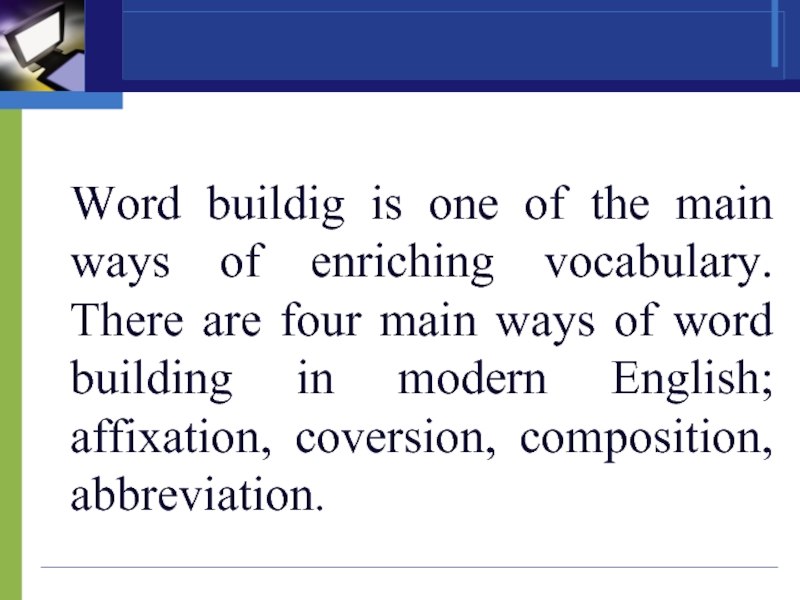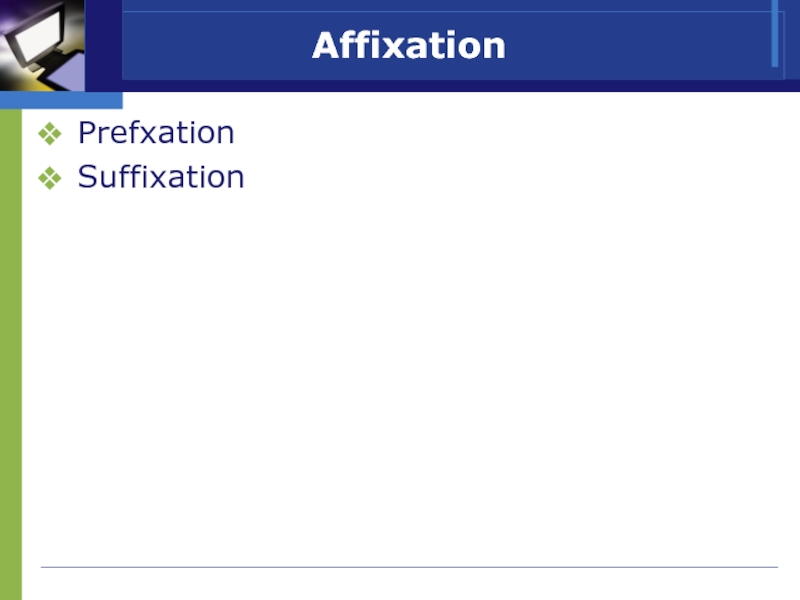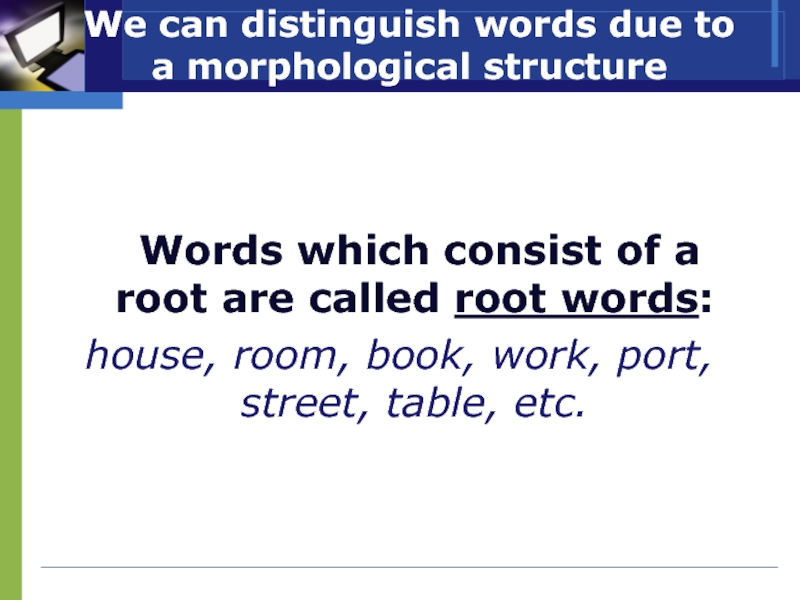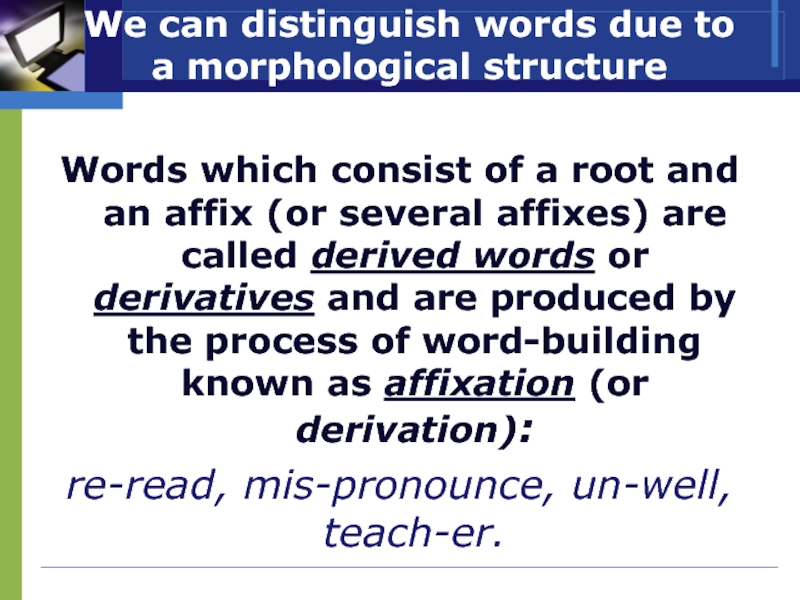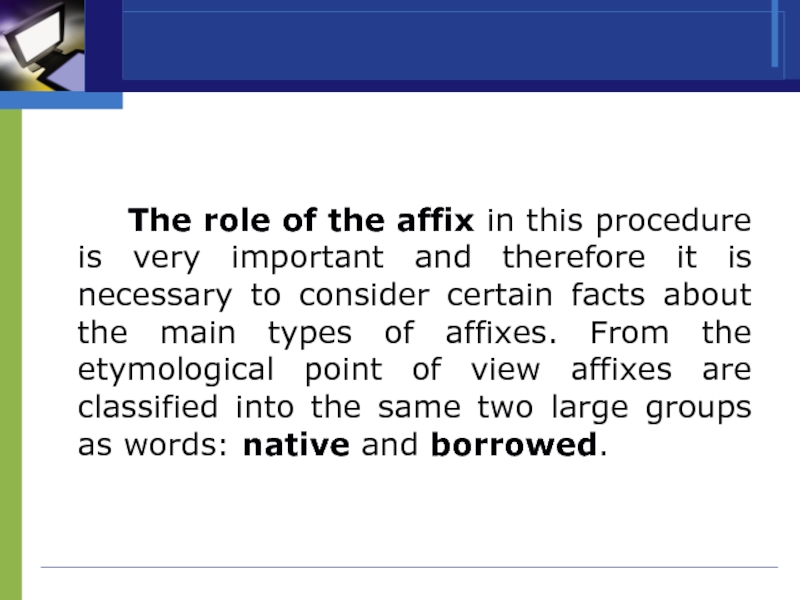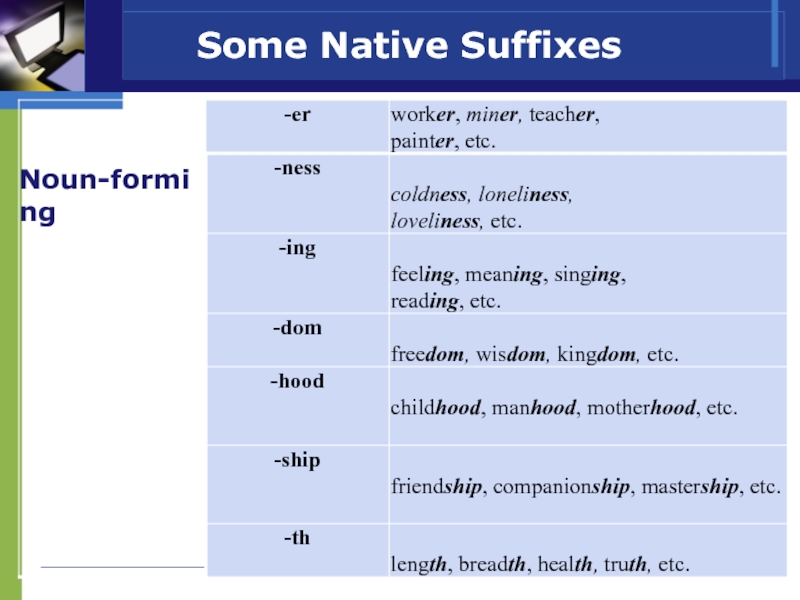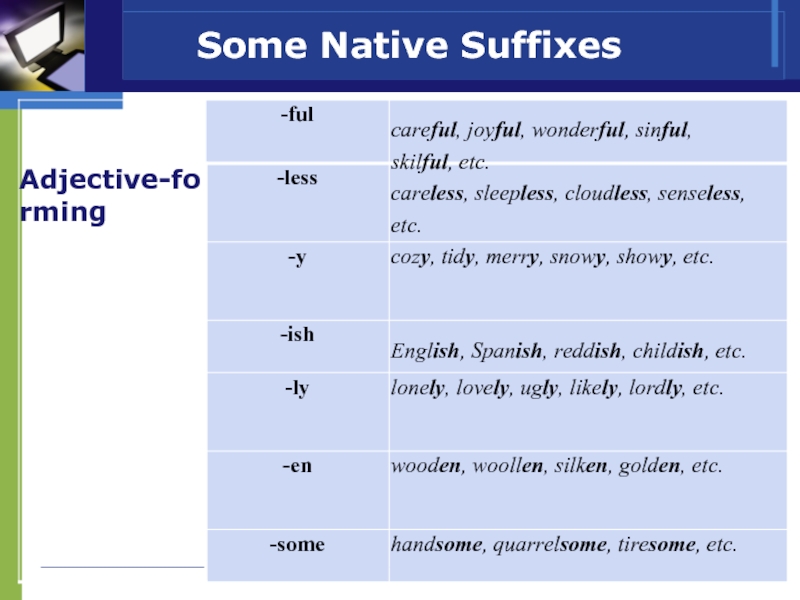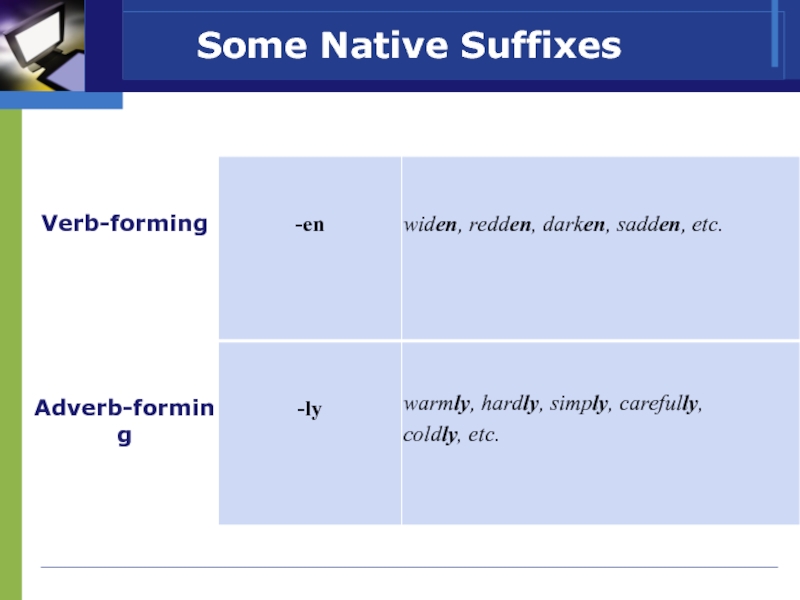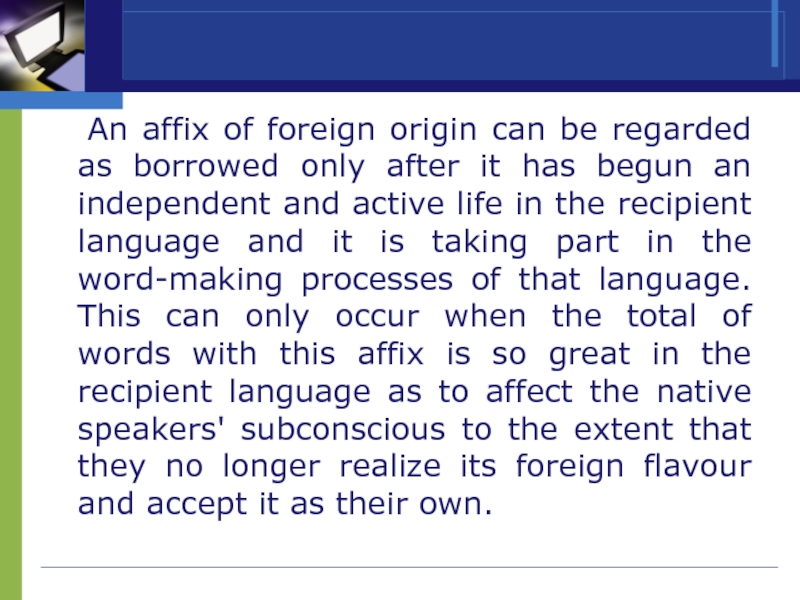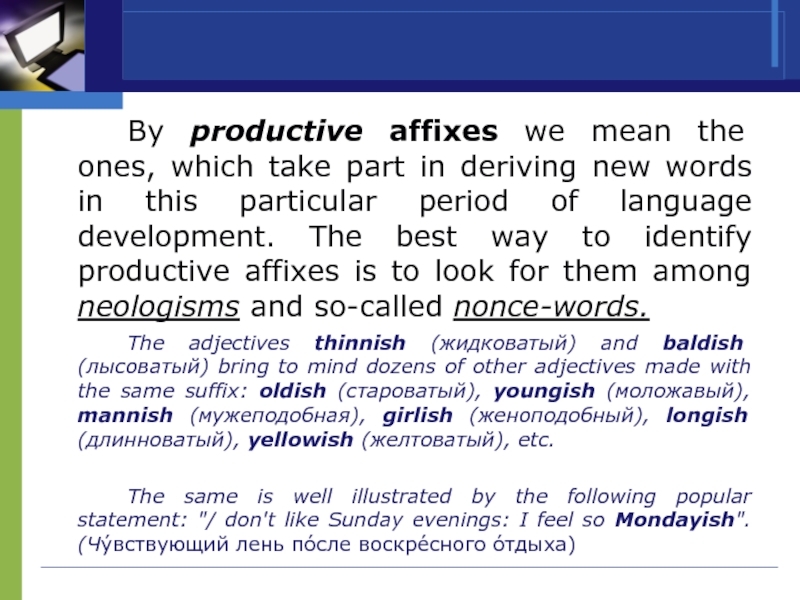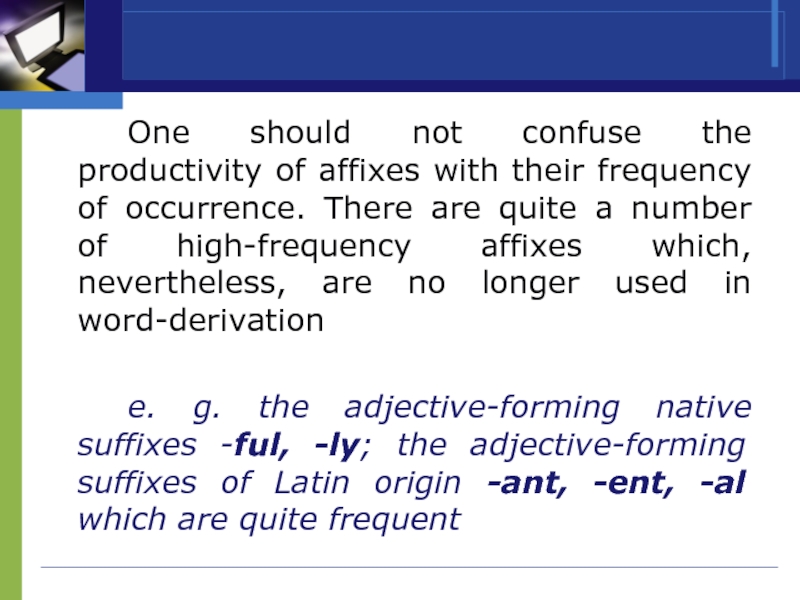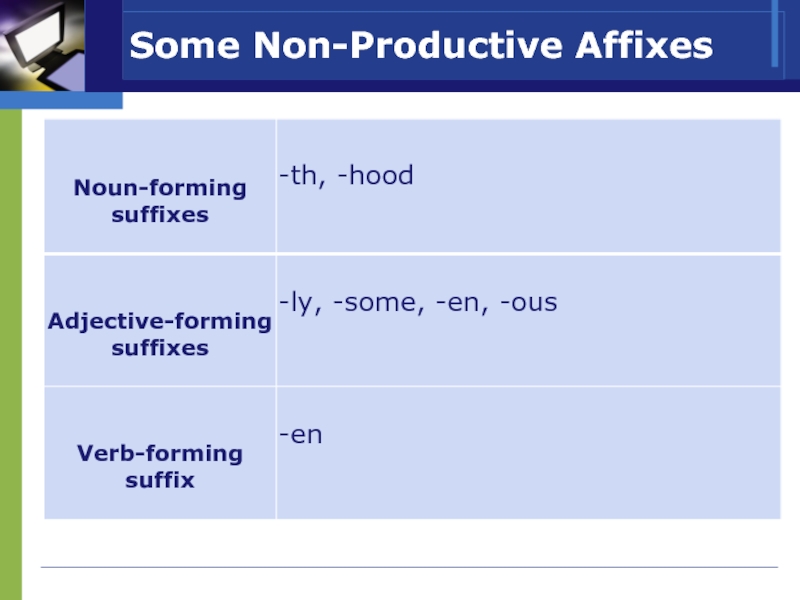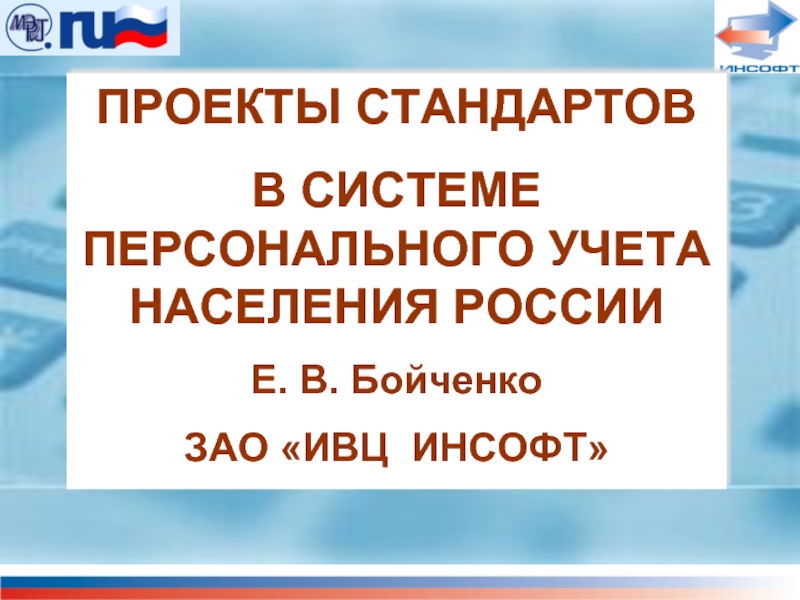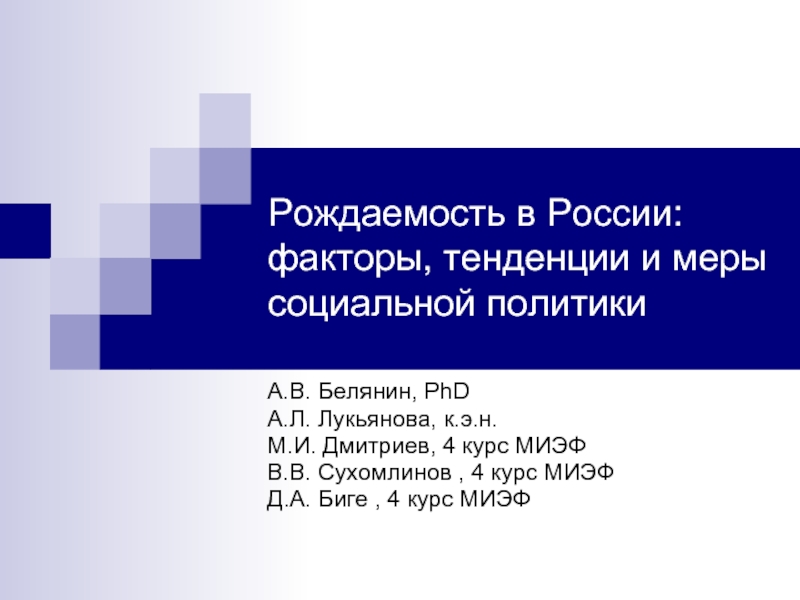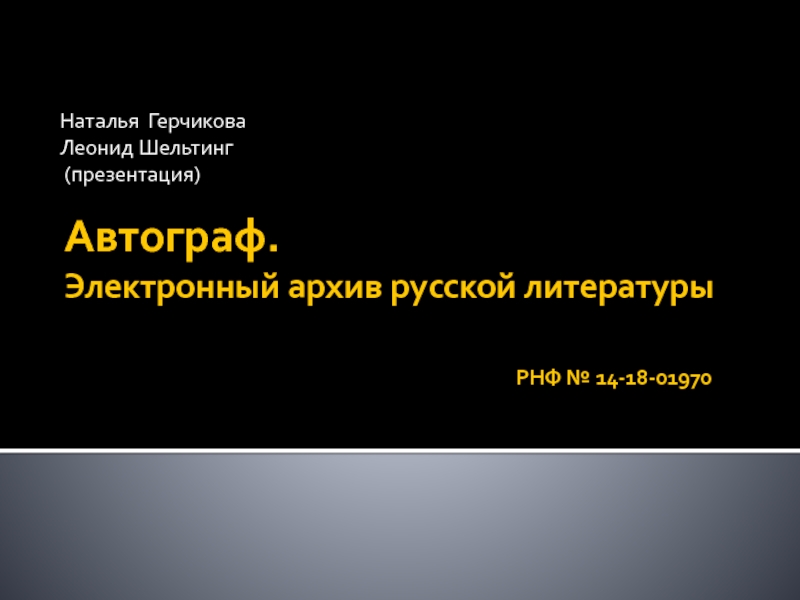- Главная
- Разное
- Дизайн
- Бизнес и предпринимательство
- Аналитика
- Образование
- Развлечения
- Красота и здоровье
- Финансы
- Государство
- Путешествия
- Спорт
- Недвижимость
- Армия
- Графика
- Культурология
- Еда и кулинария
- Лингвистика
- Английский язык
- Астрономия
- Алгебра
- Биология
- География
- Детские презентации
- Информатика
- История
- Литература
- Маркетинг
- Математика
- Медицина
- Менеджмент
- Музыка
- МХК
- Немецкий язык
- ОБЖ
- Обществознание
- Окружающий мир
- Педагогика
- Русский язык
- Технология
- Физика
- Философия
- Химия
- Шаблоны, картинки для презентаций
- Экология
- Экономика
- Юриспруденция
Affixetion презентация
Содержание
- 1. Affixetion
- 2. Word buildig is one of the main
- 3. Affixation The
- 4. Affixation Prefxation Suffixation
- 5. We can distinguish words due to a
- 6. We can distinguish words due to a
- 7. We can distinguish words due to a
- 8. The role of the affix
- 9. Some Native Suffixes
- 10. Some Native Suffixes
- 11. Some Native Suffixes
- 12. An affix of foreign origin
- 13. By productive affixes we mean the ones,
- 14. One should not confuse the productivity of
- 15. Some Productive Affixes
- 16. Some Non-Productive Affixes
Слайд 2Word buildig is one of the main ways of enriching vocabulary.
There are four main ways of word building in modern English; affixation, coversion, composition, abbreviation.
Слайд 3
Affixation
The process of affixation consists in coining a new word
by adding an affix or several affixes to some root morpheme.
Слайд 5We can distinguish words due to a morphological structure
Words which consist
of a root are called root words:
house, room, book, work, port, street, table, etc.
house, room, book, work, port, street, table, etc.
Слайд 6We can distinguish words due to a morphological structure
Words which consist
of a root and an affix (or several affixes) are called derived words or derivatives and are produced by the process of word-building known as affixation (or derivation):
re-read, mis-pronounce, un-well, teach-er.
re-read, mis-pronounce, un-well, teach-er.
Слайд 7We can distinguish words due to a morphological structure
Сompound-derivatives are words
in which the structural integrity of the two free stems is ensured by a suffix referring to the combination as a whole, not to one of its elements:
kind-hearted, old-timer, schoolboyishness, teenager.
kind-hearted, old-timer, schoolboyishness, teenager.
Слайд 8
The role of the affix in this procedure is very important
and therefore it is necessary to consider certain facts about the main types of affixes. From the etymological point of view affixes are classified into the same two large groups as words: native and borrowed.
Слайд 12 An affix of foreign origin can be regarded as
borrowed only after it has begun an independent and active life in the recipient language and it is taking part in the word-making processes of that language. This can only occur when the total of words with this affix is so great in the recipient language as to affect the native speakers' subconscious to the extent that they no longer realize its foreign flavour and accept it as their own.
Слайд 13 By productive affixes we mean the ones, which take part in
deriving new words in this particular period of language development. The best way to identify productive affixes is to look for them among neologisms and so-called nonce-words.
The adjectives thinnish (жидковатый) and baldish (лысоватый) bring to mind dozens of other adjectives made with the same suffix: oldish (староватый), youngish (моложавый), mannish (мужеподобная), girlish (женоподобный), longish (длинноватый), yellowish (желтоватый), etc.
The same is well illustrated by the following popular statement: "/ don't like Sunday evenings: I feel so Mondayish". (Чу́вствующий лень по́сле воскре́сного о́тдыха)
The adjectives thinnish (жидковатый) and baldish (лысоватый) bring to mind dozens of other adjectives made with the same suffix: oldish (староватый), youngish (моложавый), mannish (мужеподобная), girlish (женоподобный), longish (длинноватый), yellowish (желтоватый), etc.
The same is well illustrated by the following popular statement: "/ don't like Sunday evenings: I feel so Mondayish". (Чу́вствующий лень по́сле воскре́сного о́тдыха)
Слайд 14 One should not confuse the productivity of affixes with their frequency
of occurrence. There are quite a number of high-frequency affixes which, nevertheless, are no longer used in word-derivation
e. g. the adjective-forming native suffixes -ful, -ly; the adjective-forming suffixes of Latin origin -ant, -ent, -al which are quite frequent
e. g. the adjective-forming native suffixes -ful, -ly; the adjective-forming suffixes of Latin origin -ant, -ent, -al which are quite frequent

